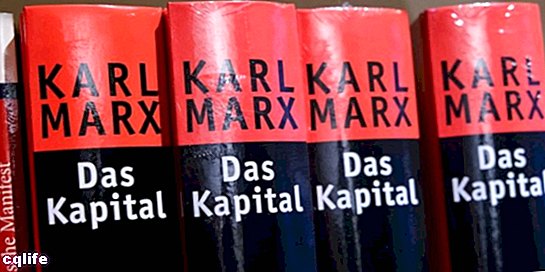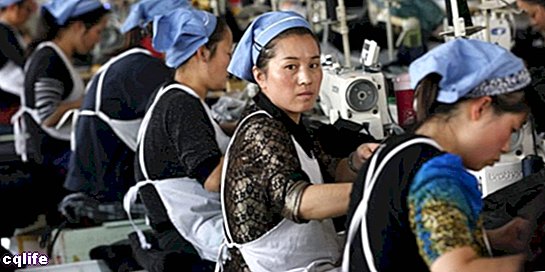- What is capital gains?
- Origin of the concept of capital gain
- Calculation of capital gains
- Relative and absolute capital gains
- Capital gains and losses
We explain what capital gain is, the origin of this concept and how it is calculated. Also, differences between relative and absolute capital gains.

What is capital gains?
Surplus value, surplus value or supervalue is a term typical of economic philosophy Marxist, that is, proposed by Karl Marx, and his criticism of classical economists such as Adam Smith (1723-1790) or David Ricardo (1772-1823), in whose works this concept already appeared, but not defined.
The capital gain can be understood as the monetary equivalent (that is, in money) of the additional value to its work force that produces a employee, and that the bourgeois appropriates or "extracts" from him, with which the process of capitalist accumulation.
In simpler terms, surplus value is the portion of production that is not remunerated to workers, but is part of the gain of the employer. It is conceived as the difference between the value of the total produced and the salary received by the workers.
This is explained, according to Marxist theory, because the capitalism it is a system of production of surplus value, rather than a system of production of consumable goods.
Thus, when the worker in the factory works a certain number of hours, he receives in exchange a salary which is not equivalent to the production he carried out during his day, but to the value of his work force, that is, what it costs to have him there working daily and guarantee his offspring (which will eventually replace him), which is necessarily less.
In this way, employers benefit from that "extra" production that others worked for them. They eventually get it as money that accumulates for them and from which they can extract their profits, invest in new Projects, etc.
Origin of the concept of capital gain

Surplus value is a term that Karl Marx takes from his readings of the work of David Ricardo. that is really going to develop and acquire importance in Capital , perhaps the best known work of Marx. Since then, it has been an inseparable concept from Marxist language and from the critique of the relationship of exploitation of capitalism.
Calculation of capital gains
According to Marx's view, surplus value can be calculated mathematically. It is equal to the entrepreneur's income after deducting the costs production of the business. The latter are divided into two:
- Constant capital (c). Where are the materials, supplies and production machinery. Marx calls it "dead capital."
- Variable capital (v). What are personnel costs (work force). According to Marx, only the latter capital generates surplus value, and he calls it "living capital."
The initial capital of the company (C1) is equal to the two previous capitals (C1 = c + v), while the final capital of the same (C2) is equal to the initial capital, plus the capital gain (C2 = C1 + p) . Thus, goodwill can be calculated as C2 - C1.
Furthermore, Marx introduces the Capital Gain Rate, with which the degree of exploitation of a worker can be calculated, and which is the difference between surplus value (p) and labor costs (v), taken to the percentage (TP = p / v .100). By calculating this, we can know how many hours a worker works for nothing, that is, to generate the surplus value that the capitalist will keep.
The latter is important because it exemplifies the concept of capitalist exploitation: it consists in the fact that the worker produces through his work more than what would be needed for him and his people to subsist, what Marx calls “the value of the replication of labor power ”. Let's explain it in numbers:
A businessman has a chorizo factory, in which he has 5 employees making 100 chorizo a day (about 2,000 a month), which then goes to the local market. To do this, he must buy the inputs, pay for the services and maintain the machinery, which causes him a total monthly expense of 2,000 pesos (c), added to the payment of his five employees who earn a salary of 200 pesos per month each, that is , 1000 pesos a month in total (v). We have C1 = 3000 pesos.
The chorizos are sold in their entirety, at 2 pesos each, so that at the end of the month, the factory receives 4,000 gross pesos. From that figure we will deduct C1 and we will obtain a capital gain of 1,000 pesos per month; which, expressed in its rate of surplus value, would be TP = 1,000 / 1,000. 100 = 100%, that is, an exploitation of 100% of the production.
The latter means, continuing the Marxist formulation, that of each hour worked by the worker, 50% is dedicated to producing the sausages whose sale they will feed him, and 50% is dedicated to producing the sausages for which he will not receive anything. That means that, if the working day is 8 hours, 4 of them will be dedicated to manufacturing surplus value.
With this formulation, Marx explains that capitalism deepens the Social inequality, by "stealing" production from the working class to give it to the capitalists.
Relative and absolute capital gains

These two concepts are, according to Marx, the two ways in which capitalism can increase its rate of exploitation and therefore the amount of surplus value it obtains. They are distinguished in:
- The absolute capital gain. It is obtained when the rate of exploitation of workers increases, usually by lengthening the working day. Thus, more surplus value is obtained without increasing the value of labor power.
- The relative capital gain. On the other hand, it is obtained when the surplus value obtained through the increase in production is increased, so that the rate of exploitation increases without altering the working hours.
Capital gains and losses
In the urban and real estate field, the term surplus value is used and its opposite, handicap, with a different meaning from that of Marxist philosophy. In this case, “surplus value” denotes the increase in the value of a property or land, as a result of urban modifications or public works in its neighborhood, without costing the owners anything.
For its part, handicap means the loss of value of the property or land as a result of events in its vicinity that deplete its market price.
